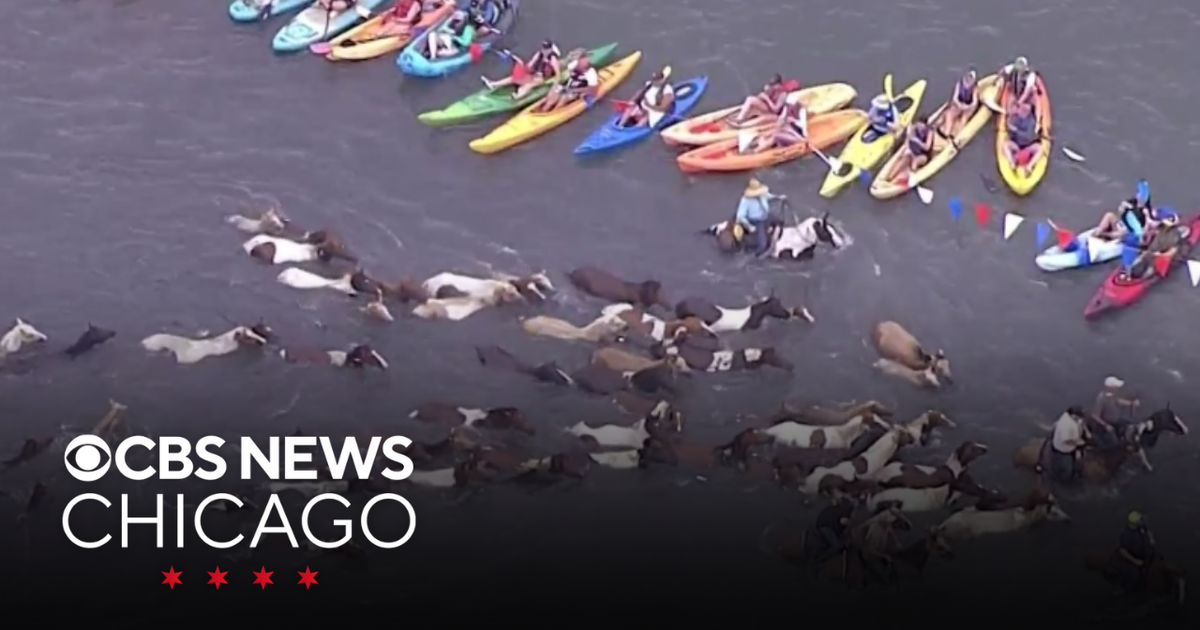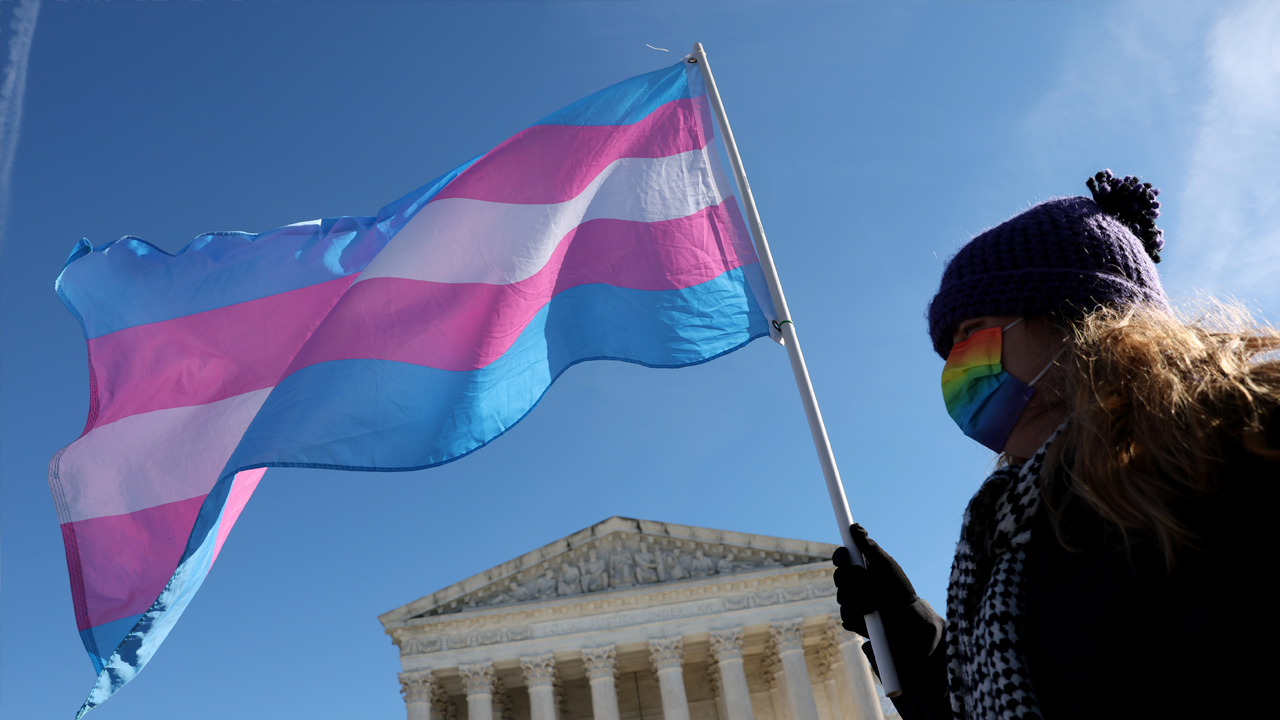- Government officials from Utah and Australia shared a global commitment to protect kids from digital danger.
- Recent Utah trade mission to Australia prompted unexpected collaboration on protecting youth from social media risks.
- Several Utah officials — including Gov. Spencer Cox — support “bell-to-bell” cell phone restrictions in K-12 schools.
Utah
How Utah’s Christmas Festival has buoyed a changing coal community – High Country News

This story is part of a series on the future of Utah’s Coal Country. Read the first story about labor in the coal mines.
On the Friday evening after Thanksgiving, the Main Street of Helper, Utah, was pitch-black. The streetlights were off, and patches of ice dotted the sidewalk. At 6 p.m., a collection of small lights came into view from the south end of the street and slowly clarified into a procession of school children, holding flameless candles in mitten-covered hands as they sang “Jingle Bells.”
A crowd of about 40 people followed the kids into a small snow-covered park. Everyone gathered around the stage, where Mayor Lenise Peterman read a proclamation from Gov. Spencer Cox declaring Helper as Utah’s Christmas Town for the 35th year.
“Park City was trying to take our title,” said Mark Montoya, a co-director of Helper’s Christmas Festival, after Peterman read Cox’s statement. “But we didn’t let them. They don’t have a proclamation.” Montoya, an exuberant and warm middle-aged man, was born in Helper, a small town of 2,000 people in Carbon County, halfway between Salt Lake City and Moab, and he has never left.
The winners of the Miss Carbon County contest, wearing tiaras and sashes, took the stage next and led a countdown: “Ten, nine, eight. …” The crowd joined in, and the second they shouted “ONE,” the entire town lit up. Strings of white twinkle lights outlined each brick building. A colorfully illuminated train decoration brightened the park, which is next to the Union Pacific station where the “helper” engine — the town’s namesake — still waits, ready to assist trains up the nearby steep canyon. Even Big John, a towering statue of a coal miner, was wearing a Santa hat.
Helper’s two-week Christmas Festival started in 1990, as nearby coal mines were shutting down and laying off workers. The once-bustling town was, for years, the hub of Utah’s Coal Country known for its bars, brothels (the last one closed in 1977) and an assortment of restaurants whose diverse cuisine reflected the immigrants drawn to the mines from all over the world. “We’re the black sheep of Utah,” Montoya told High Country News. By the 1980s, though, Helper was practically a ghost town. “It was just desolate, like there was nothing here,” Montoya said. “That was half the reason why people started the annual Helper Light Parade. They did it to kind of lift the spirits of the community.”

In the 1990s, artists began buying abandoned buildings on Main Street, lured by the low prices, the town’s eccentric industrial history and the nearby scenery, especially the surrounding Book Cliffs. In 1995, they started an Arts Festival that attracted some visitors. Then the Balance Rock Eatery opened in 1999, and travelers on their way to Moab two hours south began pulling off the highway to grab lunch. Life returned to Helper as tourism increased, and some of the young professionals who had fled Carbon County began moving back home.
“We’re the black sheep of Utah.”
Montoya, however, had never had any desire to leave. “I just love this town,” he said. He has experienced Helper’s transition firsthand: He’s been involved in the Christmas Festival since its inception, selling hot chocolate out of an old Coca-Cola wagon when he was a teenager. Montoya, who works as the town’s mail carrier, also manages several new AirBnBs and long-term rentals. “I’d go from walking down the street and seeing all these vacant, dilapidated buildings to this,” he said, gesturing to the nearly full Main Street. “This is so much better.”
Change is hard, though, and not all locals support the transition from a coal-based economy to one that relies on tourism and the arts. Since 2020, Carbon County hasn’t produced any coal, and the Carbon Power Plant, just three miles north of town, shuttered in 2015. The residents who still depend on the coal industry travel 40 to 90 minutes south to work at the mines and power plants in Emery County. For Helper, the energy transition is about more than fuel replacement; it’s about diversifying the economy while also honoring the generations of workers who kept the lights on.
Montoya likens what’s happening in Helper to producing an ongoing play. “It takes everybody to make that play work,” he said. “And when you’re telling a story, sometimes you introduce new characters along the way.”


Scenes from the Helper Light Parade. The town’s two-week Christmas Festival started in 1990, as nearby coal mines were shutting down and laying off workers.
A FEW DAYS AFTER the lighting ceremony, locals gathered in the town cemetery for the annual Luminary Memorial Service. Historically, they used classic luminarias — paper bags aglow with candles — but this year they placed purple, green and blue solar lights near the headstones.
Some of the oldest graves there belong to Italian families who immigrated to the area in the late 1800s. On the south end of Main Street, “welcome” is engraved on the sidewalk in the 27 languages — from Greek to Japanese — that were spoken in Helper at the beginning of the 20th century.
Early miners in Carbon County faced racism, poverty and the daily, deadly risks of hard work underground. “These were really harsh conditions,” Roman Vega, curator of Helper’s Western Mining and Railroad Museum, said. “You had a lot of accidents. You had a lot of deaths.”
The Italian workers went on strike in the early 1900s, and Mary Harris Jones — the legendary “Mother” Jones, the iconic labor organizer — marched down Main Street with the miners. The United Mine Workers of America became a strong presence in the region, and every year on Labor Day, the UMWA celebrated the local workers and labor unions. Montoya fondly remembers the excitement — a big picnic, coal-shoveling contest and games for kids.

Montoya’s own great-grandparents moved to Carbon County from New Mexico in the 1940s. “All my coal-mining ancestors, my uncles and my grandfathers, they were all union members,” Montoya said. His father, who worked for the railroad, was also part of a union. Today, Montoya continues that legacy as the union steward for the Northwest region of the National Association of Letter Carriers.
Montoya has always considered Helper’s Main Street to be his “stomping grounds,” ever since he was a kid stocking shelves at the pharmacy in exchange for a soda. He has spent more than 25 years delivering the mail and, on his route, he can track the town’s evolution. Main Street’s once-abandoned buildings are now brightened by neon signs and fresh paint. Eighteen of them were restored by local developer Gary DeVincent and his wife, Malarie, a former Helper City Council member, who also own some of the AirBnBs and rentals Montoya manages.
“(The tourists) love the history of old towns,” Montoya said. “It’s a big draw.”
DURING THE FIRST WEEK of December, the Main Street businesses decorated their storefronts. Friar Tuck’s Barbershop, owned by Kylee Howell, won the window-decorating contest. A toy train that once circled her grandparents’ Christmas tree ran along the front of the display, one of its cars filled with snow-covered coal. In the corner, a tall rainbow-striped candy cane from Montoya served as a festive replacement for Howell’s usual pride flag.
The stripes on the barber pole on Howell’s shop have been twirling there for generations. Howell largely cuts the hair of the “blue-collar dudes” who work at the region’s remaining coal mines, power plants and manufacturing businesses. According to Headwater Economics, such non-service jobs were still the highest-paying jobs in Carbon County last year, though they employed the fewest people. Most jobs these days are in the lower-paying service industries, such as retail. Over 12% of families in Carbon County live below the poverty line, the third-highest rate in the state.
Howell has only been in Helper for four years, but she isn’t new to Carbon County; she lived in the nearby towns of Price and East Carbon until she moved to Salt Lake County as a teenager. Her family went to Helper twice a year, attending the Arts Festival on the third weekend in August and watching the light parade every December. She has fond memories of bundling up, sipping hot chocolate and watching the bright floats trundle down Main Street.

After Howell moved away, though, she never thought she’d return. Then, about four years ago, she and her wife found themselves looking for somewhere more affordable and rural to live.
Helper’s revitalized Main Street first sold Howell on the town. What solidified it for her, though, was the fact that Helper’s mayor was a lesbian. When one of her clients in Salt Lake first told her that, Howell didn’t believe it. But she looked it up, and sure enough, “There’s Lenise with her carabiner and cargo shorts,” Howell recalled.
Lenise Peterman moved to Helper about 10 years ago, a few years after her wife, Kate Kilpatrick, ventured here to fulfill her dream of being an artist. Since then, Kilpatrick has recorded the stories and painted the portraits of roughly 180 Helper locals.
When Peterman ran for mayor, she fully embraced the economic transition. “While we can respect and honor what the coal industry has done and been for us, it’s not the path to the future, and we need to decide if we’re just going to hold our breath and wait for a coal mine to close or a plant to close,” she told High Country News, “or we can proactively determine who we are and what we want to do, and let’s go do it.” That was her platform, and the town voted for it.
Now, Helper’s Main Street is busy nearly every weekend during summer, from its “First Friday” gallery strolls to the bimonthly Helper Saturday Vibes street fair, originally brought to Helper by the organizer of Park City’s summer market.
It’s hard work keeping a small town afloat, though. Peterman constantly applies for grants to fund infrastructure improvements. Tourism brings revenue through sales and transient room taxes, and the city has updated things like event permits to mitigate the impact on city resources. But the changes have also sparked controversy: New permits have increased the cost of putting on some special events. Last summer, one longtime local, Mike James, moved his Outlaw Car Show, which he started three years before the Christmas Festival began, to a town 35 miles away.
“While we can respect and honor what the coal industry has done and been for us, it’s not the path to the future.”
There have also been dramatic changes in the housing market. A couple of decades ago, Montoya said, there may have been as many as 20 houses for sale on his mail route. Now, there’s maybe two at any given time, and they’ll likely be snapped up within a week, he said. In a roughly eight-year period, he watched one small two-bedroom house go from $68,000 to $175,000. Now, a 1,600-square-foot home sells for over $400,000.
While Montoya still views tourism as a good path for the town, he said the AirBnBs should stay on Main Street. “I don’t think there’s a need for that in neighborhoods,” he said. “Those houses need to be available for people to move into.”

Small destination towns like Helper can fall into what researchers at Headwaters Economics call the “amenity trap.” As a place becomes increasingly attractive to tourists and wealthy homebuyers — people who want amenities — it often becomes too expensive for all but the very well-off. The coal industry has always had its booms and busts, but a tourism-based economy can prove equally precarious, creating an economy based on low-paying service jobs and unaffordable housing.
Peterman told High Country News that the town’s planning and zoning commission is looking at possibly limiting AirBnBs, though she’s “not super keen” on telling people what they can do with their property. Ultimately, Peterman views tourism as just one piece of the puzzle. She hopes the town can attract another industry that resonates with its amenities. “Why aren’t we building ATVs?” she wondered.

HOUSING COSTS IN HELPER have gone up, but they’re still a far cry from the prices in Moab and Park City. Howell, Montoya and others told High Country News that they’re not worried about Helper following in the footsteps of Utah’s more famous former mining towns. Helper lacks the amenities that other, wealthier towns boast; there is no nearby ski resort to attract millions of visitors or Arches National Park in the backyard. Instead, visitors have access to less well-known public lands, such as the San Rafael Swell, and, above all, the town has a history that it takes pride in.
While Helper’s transformation into an art and tourist town might seem like it conflicts with its mining history, those two strands are also intertwined. One of the co-founders of the Arts Festival, Thomas Williams, was a miner in Utah’s coalfields before becoming a painter. Williams passed away a few years ago, but his paintings of his fellow miners still hang at the Balance Rock Eatery.
Scenes from a Saturday morning “Breakfast with Santa.” Residents gather; Billy Deeter carves ham; Chanel and Jesse Candelaria, with their children Lennen, 8, and Sunny, 2, visit with Santa.
This relationship has helped some former miners embrace the changes. “I’m really happy about it,” Celso Montoya, Mark Montoya’s uncle and a retired coal miner, said. “These artists come here, and they’ve brought the town back up.” He loves the new brewery that opened on the north edge of Main Street a year and a half ago. He always gets the prosciutto sandwich. “After I finish it, and I’m walking out, I look up and say, ‘Take me, Lord, if you want.’”
As Helper continues to move forward, the Christmas Festival offers a sense of continuity. During its last two days, Brenda Deeter, who co-directs Christmas Town with Mark Montoya, spent hours cooking a “Breakfast with Santa” and back-to-back chili dinners in the town’s civic center. It was a true family affair, with Deeter’s children, grandchildren and in-laws flipping waffles by morning and dishing chili over kielbasa sausages — a town classic, a remnant from its history of immigration — by night.

“These artists come here, and they’ve brought the town back up.”
While the locals devoured the chili, Montoya and his friend Tyler Nelsen, who works at the Hunter coal-fired power plant 45-minutes south, drove around in a golf cart to line up the floats.
Local businesses, from Utah Power Credit Union to the nearby RV Park, created displays with thousands of lights. Intermountain Electronics, the region’s major manufacturing business, stole the show, though, with workers dressed in reindeer costumes who appeared to fly through the air, pulling a red sleigh: They sat on a long black beam attached to a lifting machine called a telehandler, and were raised and lowered by the driver as they cruised down Main Street. The float made Montoya, and the thousands filling the sidewalks, giddy with delight.
The festival ended with a fireworks show set to a soundtrack of Christmas songs on the local radio station. Montoya watched from behind Main Street, next to the railroad track, the outline of the Book Cliffs visible at the edge of town.
“I want people to discover this place,” he said.
Reporting for this project was supported by the MIT Environmental Solutions Initiative Journalism Fellowship.


Utah
Utah and Australian lawmakers find unexpected common ground

SYDNEY, Australia — At first glance, a team of visiting Utah lawmakers and their Australian hosts would not appear to share much in common.
They have different forms of government — one, a republic; the other, a constitutional monarchy. Different continents. Different hemispheres. And vastly different time zones.
But the two geographically distant groups discovered they share a global concern: They are fiercely concerned about kids and digital safety.
And both groups are proponents of enhanced “bell-to-bell” cellphone use rules in schools.
Last week, a team of Utah Republican lawmakers were in Sydney as part of a broad trade mission to Australia and New Zealand organized by World Trade Center Utah.
The intent of the trade mission was to foster shared business, innovation and educational opportunities between the Beehive State and the Oceania nations.
The lawmakers participating in the trade mission networked with local representatives from mining, aerospace, tech and other industries to develop business opportunities in Utah.
But, unexpectedly, conversations between Utah Gov. Spencer Cox and the Utah lawmakers with several Australian government officials also focused on protecting kids online.
The Utahns quickly discovered that their Down Under hosts share their concern for digital safety for youth.
“One of the things that Australia has done very well is tackle the problem of social media,” Utah Senate President Stuart Adams, R-Layton, told the Deseret News.
“We looked at what they’ve done, and then compared notes to what Utah’s done. We’ve all stepped forward in a big way to push back on social media.”
Cox and Adams were joined in the digital safety discussions by Sens. Kirk Cullimore, R-Sandy, Chris Wilson, R-Logan, and Scott Sandall, R-Tremonton, and Reps. Karen Peterson, R-Clinton, and Stephen Whyte, R-Mapleton.
The Australian officials included the Hon. Greg Piper, the Hon. Ben Franklin and the Hon. Anika Wells.
“This is a critical time in our history,” said Adams. “Social media is having a measurable impact on youth mental health. Utah and Australia may be oceans apart, but our values are aligned. We are standing up for kids and ensuring technology serves our children and our communities, not the other way around.”
Utah: Leading out with social media safety
The Beehive State’s been at the forefront of social media initiatives to protect kids from digital exploitation.
The Utah Social Media Regulation Act, for example, keeps minors from using social media at restricted hours. It also requires Utah minors to obtain parental consent to have social media accounts and gives parents the ability to see all posts and messages on their children’s accounts.
The law also prevents social media companies from collecting minors’ data and targeting minors’ accounts for advertising.
Cox has emphasized the uniqueness of Utah’s digital safety initiatives.
“These are first of their kind bills in the United States,” he said in 2023. “And that’s huge that Utah is leading out on this effort. We have lots of states that are interested and I know we’re all having conversations with other governors, other legislators and other states. I suspect that you will see lots of bills like these moving forward.”
Utah also requires social media companies to enable maximum default privacy settings on Utah children’s accounts and to verify the ages of their users and provide supervisory tools for a parent or guardian.
Meanwhile, the Utah Legislature has funded a campaign to educate parents and teens about the potential dangers of social media at SocialHarms.utah.gov.
Australia’s efforts to protect kids from digital danger
Australia, meanwhile, has restricted access to social media for those under 16.
During last week’s trade mission, Utah and Australia officials talked about developing shared principles and “a framework that promotes responsible innovation, holds social media platforms accountable and strengthens protections for minors amid the growing challenges of the digital world,” according to a Utah Senate communications report.
The joint discussions, the report added, reflect shared commitments to addressing the harms of social media and excessive mobile phone use among K–12 students.
“Social media giants cannot put profits over kids’ safety,” said Cullimore. “These platforms must be accountable for manipulative, harmful design and protect user data.
Safeguarding minors is a global challenge that demands a unified approach.
“Utah has led with policies on age verification and limits on addictive design features. Australia’s approach serves as a model, and by learning from one another, we can accelerate meaningful progress, ensuring young people are empowered, not endangered, by the digital world.”
The Utah and Australian lawmakers and leaders identified several key areas of collaboration:
- Responsible mobile phone use in schools to reduce distractions and improve learning outcomes.
- Accountability for social media companies through stronger age verification, privacy and data protection for minors.
- Support for ethical education technology that prioritizes well-being.
- Public awareness campaigns promoting healthy digital habits for youth and families.
“Parents everywhere are asking for help,” said Peterson. “When we set guardrails, like limiting devices in schools and holding platforms accountable, we empower children to focus, learn and thrive. Partnering globally helps all of us do better for our kids.”
The Senate report noted that 57% of teen girls in the United States say they feel persistently sad or hopeless. Meanwhile 88% of Utah parents believe social media negatively impacts children and youth.
“The data is clear, social media is harming our kids,” said Wilson. “Protecting children isn’t just a priority; it’s our responsibility. We are not just changing laws, we are shaping a generation, uniting communities and nations around a shared mission to help children grow up healthier, stronger and more connected to what truly matters.”
Added Whyte: “Our goal is to ensure every child, everywhere, can learn, create and connect safely and confidently. Utah’s actions aim to restore balance and help families reclaim control over their digital lives.”
Adams noted that his discussions with his Australian hosts was a reminder that keeping kids safe in the digital realm is a global, nonpartisan concern and responsibility.
“It’s about concerned parents and people who love their kids — and are trying to help them get through life…Social media has done a lot of great things, but we need to protect our kids.”
Is a more aggressive policy prohibiting cellphones in Utah schools in the works?
Cox has been a vocal proponent for restricting cellphones in Utah’s K-12 public school “from bell to bell.”
His beliefs are echoed Down Under
All six states in Australia have reportedly enacted bans on cellphones during school hours, requiring phones to be switched off and “Away for the day.”
The results, reported Wilson, have been positive. Other nations have reached out to Australia in hopes of implementing their own cellphone policies in school
Similar “bell-to-bell” cellphone restrictions at Utah schools may be in the future.
Earlier this year, Utah lawmakers passed the so-called “No cellphones in K-12 schools” bill, prohibiting students in the state’s public schools from using their phones when they are in class.
The new law includes a local caveat — individual schools or districts can opt for a different policy.
Senate Bill 178 is now the state’s “default” practice. Previously, K-12 students were allowed to use cellphones whenever or wherever they wanted unless their district had their own policy in place.
But Sandall believes Utah kids would be well-served by having an enhanced “bell-to-bell” cellphone prohibition that goes beyond simply restricting devices during class time.
“We might need to look at doing that — and having our kids get to school and interacting with each other,” he said.
Some argue a child needs a cellphone in school in case of emergencies.
But Sandall counters that for generations, emergencies at Utah schools were effectively handled by school leaders.
“I think we can go back to that and feel comfortable that we can do that.”
Peterson believes Utah parents are becoming increasingly aware and supportive of social media and phone policies designed to benefit and protect their children.
“The No. 1 thing I hear from parents right now related to schools is how much time they’re spending on a device — whether it’s their own device or it’s a device at the school,” she said.
Utah
Pye-Barker’s latest acquisition expands services across Utah

Pye-Barker Fire & Safety has acquired Zion Fire & Security, expanding its comprehensive fire and life safety services across Utah.
This acquisition adds to Pye-Barker’s full-service life safety offerings in the state, enabling the company to protect more lives and properties through quality solutions and customer service.
Zion Fire & Security
Zion Fire & Security provides security, fire alarm, fire suppression and automation services for commercial customers from its headquarters in St. George, Utah.
The company offers the latest cutting-edge technology in its alarm systems, motion sensors, surveillance cameras and access control systems.
Its automation solutions provide convenience and security to control systems from anywhere through an intuitive user interface.
In addition, Zion provides 24/7 monitoring by experienced security professionals to safeguard property against potential threats.
CEO and Co-Owner, Zion Fire & Security, Michael Orchard’s statement
Michael Orchard, CEO and Co-Owner of Zion Fire & Security explained: “At Zion, we’ve always prided ourselves on our wide-ranging, comprehensive fire and life safety services.
“Joining Pye-Barker allows us to take this to the next level, strengthening our customer offerings to do what we do best- saving lives and property alike.”
CEO, Pye-Barker Fire & Safety, Bart Proctor’s statement
Bart Proctor, CEO of Pye-Barker added: “Welcoming Zion Fire & Security to the Pye-Barker team is a great honor.
“Their unwavering dedication to fire and life protection services is reflected in their community impact and the invaluable industry knowledge held by their skilled technicians.
“I have no doubt that they will be a meaningful addition to our family here at Pye-Barker.”
Zion Fire & Security’s skilled technicians will continue to serve customers in Utah. Nelson Mullins Riley & Scarborough, LLP represented Pye-Barker in the transaction.
Pye-Barker’s latest acquisition expands services across Utah: Summary
Pye-Barker Fire & Safety has acquired Zion Fire & Security, expanding its comprehensive fire and life safety services across Utah.
Pye-Barker’s latest acquisition expands services across Utah: Summary
Pye-Barker Fire & Safety has acquired Zion Fire & Security, expanding its comprehensive fire and life safety services across Utah.
Utah
2025 ‘College GameDay’ Week 10: Cincinnati at Utah

Week 10 location
The 39th season of “College GameDay” has kicked off its 32nd year of road shows. “College GameDay Built by The Home Depot” is headed to Salt Lake City, Utah on Saturday for a showdown between Cincinnati and Utah. Rece Davis hosts the three-hour show, and will be joined by analysts Kirk Herbstreit, Desmond Howard, Pat McAfee and Nick Saban at the desk, along with college football insider Pete Thamel, reporters Jen Lada and Jess Sims and college football betting analyst “Stanford Steve” Coughlin. “GameDay” legend Lee Corso retired after the Aug. 30 broadcast.
Stream ‘College GameDay’ | ‘College GameDay’ merchandise | College football schedule | College football rankings
Where to go
“College GameDay” will take place at Presidents Circle at the University of Utah from 8-11 a.m. ET. The pit will open at 6:30 a.m. ET, and fans can line up early.
Click here for more details on directions, parking instructions and everything else you need for No. 17 Cincinnati at No. 24 Utah.
Why we’re excited for Cincinnati at Utah
-
The conference foes meet for the first time ever.
-
Brendan Sorsby’s 20 passing touchdowns for Cincinnati is the 3rd-most in the Big 12.
-
Cincinnati are 5-0 in the Big 12.
-
Utah’s 267.1 rushing yards per game are the 5th-most in the FBS.
The last time Cincinnati and Utah were on ‘College GameDay’
Cincinnati last appeared on “College GameDay” on Nov. 6, 2021. The Bearcats beat the Tulsa Golden Hurricane 28-20. Saturday marks Cincinnati’s 3rd appearance on the program. Utah last appeared on CGD on Oct. 28, 2023, falling to Oregon 35-6. Saturday will be the 6th time “College GameDay” visits Utah.
Keep ‘College GameDay’ going
Christine Williamson, Harry Douglas and Harry Lyles Jr. return with “Countdown to GameDay Live.” The digital pregame show will be live each week at 8:30 a.m. ET and is available across social and streaming platforms.
Fans can also keep up with the game on the ESPN App. To learn more about ESPN’s networks and services, check out this direct-to-consumer FAQ.
For all of the latest “College GameDay” updates this season, check back in with our “College GameDay” home page periodically.
-

 New York7 days ago
New York7 days agoVideo: How Mamdani Has Evolved in the Mayoral Race
-

 World1 week ago
World1 week agoIsrael continues deadly Gaza truce breaches as US seeks to strengthen deal
-

 News1 week ago
News1 week agoVideo: Federal Agents Detain Man During New York City Raid
-

 News1 week ago
News1 week agoBooks about race and gender to be returned to school libraries on some military bases
-

 Technology1 week ago
Technology1 week agoAI girlfriend apps leak millions of private chats
-

 Politics1 week ago
Politics1 week agoTrump admin on pace to shatter deportation record by end of first year: ‘Just the beginning’
-

 News1 week ago
News1 week agoTrump news at a glance: president can send national guard to Portland, for now
-

 Business1 week ago
Business1 week agoUnionized baristas want Olympics to drop Starbucks as its ‘official coffee partner’











